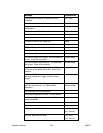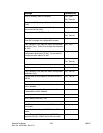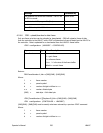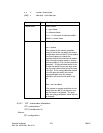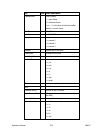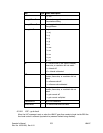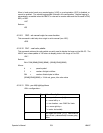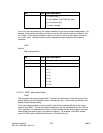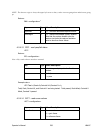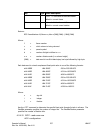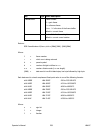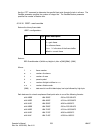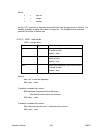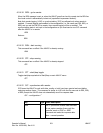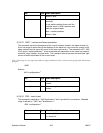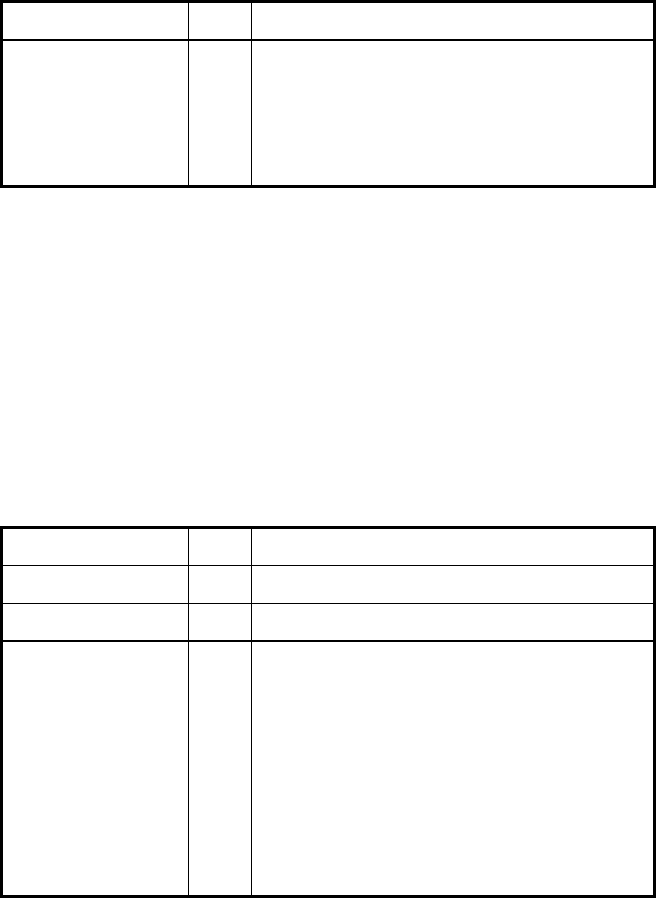
Key Type Value Description
-y = move up by y
y = new location - see :PNW? for limits
+y = move down by y
C = center vertically
±x and ±y use units defined by the camera resolution in the current camera configuration. For
example, if the camera resolution is x2 then ±x and ±y will move the capture window by ±2·x,
±2·y pixels. If the camera resolution is x8 then ±x and ±y will move the capture window by
±8·x, ±8·y pixels. Absolute locations will be snapped to integer multiples of the camera
resolution.
:PAN?
Returns:
PAN <configuration>
2
Key Type Value Description
CaptureLocation I,I X,Y - upper left corner of capture area
CaptureSize I,I X,Y - width and height of frame size
CaptureResolution L -1 = Full 1x
0 = 1x
1 = 2x
2 = 4x
3 = 8x
4 = 16x
5 = 32x
A.5.4.12 PNW - pan window limits
:PNW?
This command returns pan window limits. These are the dimensions of the active area of the
camera detector and the allowable limits of the manual origin. These limits are defined in the
Special Camera Settings dialog.
The current capture location and size must fit inside of the rectangle defined by the values
returned from PNW?. The current capture location and size can be obtained with the :PAN? or
:CAP? command. To determine the number of pixels actually covered by the capture area you
must multiply the capture size by the capture resolution. For example, 128x120x4 actually
covers 512x480 pixels, 64x60x2 actually covers 128x120 pixels, etc.
Operator’s Manual LBA-PC
Doc. No. 10654-001, Rev 4.10
255




